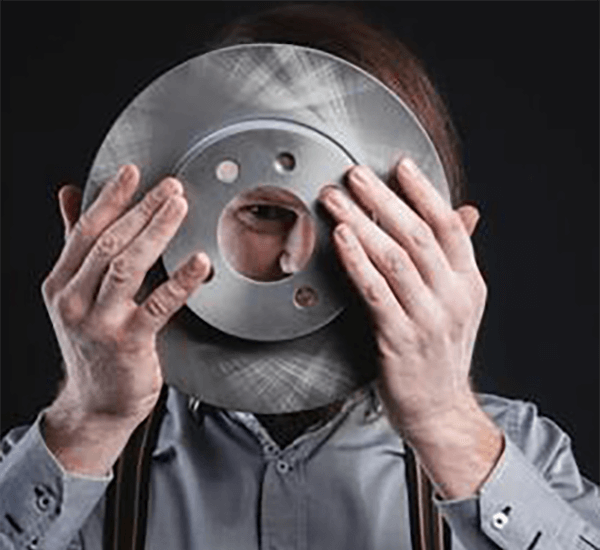
Meeting defined surface quality on a CNC-produced component is of paramount importance.
- CAD annotations convey exact surface criteria for production
- Surface notes typically employ Ra—arithmetic mean deviation—when specifying roughness
- Appreciating callout details is key to ensuring product functionality
- Prescribed surface characteristics govern lubrication, abrasion, and longevity
- Careful reading of finish callouts enables achieving the planned outcome
CNC Machining — Precision Engineering Explained

Numerical control machining stands as an advanced production approach through G-code driven routines the hardware sculpts intricate parts accurately.
- CNC systems permit manufacture of precise components from diverse substrates
- CNC’s flexible capabilities match requirements of aerospace and automotive fields
- Machine-controlled machining secures stable repeatability for production lots
From initial prototype stages to mass-manufacture CNC machining supports modern production workflows
Comprehending CNC Machine Specifications
Interpreting CNC data often seems complex on first review
Though a little background plus organization helps you interpret technical details effectively
Open by noting essential values: spindle speed, feeds, accuracy, envelope, control type
All attributes together shape the system’s production performance.
Consider that higher spindle velocity suits pliant materials while elevated feed boosts capacity.
Knowing these correlations permits matching machine capabilities to your specs
Always examine producer technical literature in detail.
Manufacturer docs typically supply key details and decode technical phrasing
A Guide to CNC Machines: What You Need to Know
CNC machines are specialized computer-controlled systems used in manufacturing for precise and automated fabrication of various materials These systems execute G-code sequences to govern tool movement and actuation.
- Common CNC classes include milling machines, turning lathes, routing systems, plasma cutters
- Machining operations fit metal, plastic, wood, and composite workpieces
- Moreover CNC platforms enable rapid model creation and small-batch production for SMEs and R&D teams
CNC Basics and Explanations
They exemplify the union of precise mechanics and modern control software Versatile machinery employs programmed code to autonomously produce simple parts and complex assemblies The fundamental principle behind CNC machines is the translation of digital designs into physical forms.
- Numerical control manufacturing
- Code-driven production workflow
It requires coordinated toolpath steps instructed by G-code Operators play a crucial role in selecting the appropriate cutting parameters monitoring the operation and ensuring the quality of the final product.
Impact of Surface Finish on CNC Machining
Achieving the desired surface finish in CNC machining is crucial It determines product function and aesthetic quality Substrate properties, machining variables, and post-process methods shape surface outcome.
A polished finish improves wear resistance whereas coarse texture can hinder performance Programmed machining features assorted toolpaths and cutters to deliver specified finishes.
- Consider using alternative cutting shapes |tool materials|speed settings to obtain particular finish
- Also surface treatments such as grinding and polishing can refine textures
Knowing parameter-to-finish links is vital to secure the best results.
CNC Overview: From Use to Application
Precision production uses machine control software to shape parts from different material classes They execute coded toolpaths to create intricate parts repeatedly Familiarity with programming, tooling, and machine operation is key to process success
Use cases cover aerospace, automotive, medical, electronics, and more sectors From turbine components to precision mold cores, CNC supports manufacture of complex parts
Surface Finish Specification Guidelines
Correctly specifying finish is vital for CNC-produced components It ensures that the final product meets the requirements for function and aesthetics Finish specifications are often expressed via the Ra roughness standard The value, shown in µm or inches, quantifies mean surface irregularity height.
Weigh required surface smoothness against intended use when defining callouts

Generally fine finishes benefit components requiring precision alignment and tolerance
Conversely a rougher surface finish could be appropriate for applications where grip friction traction is important
Apply clear finish annotations in technical drawings to state desired texture Document the Ra value and enumerate any extra finishing or treatment instructions.
Bear in mind accurate finish callouts drive better manufacturing results
CNC Machine Types and Their Functions
Numerical control machining comprises numerous machine types engineered for diverse applications These versatile tools utilize computer-aided design (CAD) software to control cutting tools enabling precise and efficient fabrication of components.
- Milling machines are renowned for their ability to remove material from a workpiece shaping it into complex geometries
- Routers handle flat panel cutting and profiling for non-metal workpieces
- Beam and jet cutting methods enable accurate slicing with differing thermal impacts
Equipment choice hinges on material, design intricacy, and precision requirements Every machine class brings specific strengths that serve sectors like aerospace and automotive.
Securing Optimal Finish Using CNC Machining
Securing excellent surface finish plays a key role in production and CNC methods enable that outcome By adjusting feed, rpm, and cutter geometry skilled staff shape chip flow and surface formation for better finishes Plus durable cutting materials and appropriate coolant control boost finish quality Through careful selection of cutting strategies and meticulous machine setup CNC machining enables the creation of components with exceptional surface quality for diverse applications.
Realizing Finish through CNC Code
Skillful CNC programming directly impacts the final surface quality Feed, spindle settings, and cutter design are major drivers of the final surface condition Meticulous parameter tuning together with suitable coolant use promotes smoother finishes.
- Plus regular inspection and maintenance of tools copyright finishing standards Additionally routine tool checks and upkeep maintain consistent finish quality Moreover scheduled tool maintenance and inspection preserve surface performance
- In pursuit of improved finish examine material properties, roughness goals and application
- Simulated machining supports parameter refinement to mitigate surface issues
- Also ongoing tool care and inspection support sustained finish reliability
